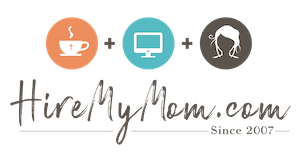Why and How to Make Remote Work Your Career Path
Whether you’re a freelancer, entrepreneur, or looking to transition from a traditional office job, embracing remote work can open up new opportunities and offer a flexible and fulfilling career path. In this blog post, we will explore why remote work should be a part of your career goals and provide tips on how to make it a successful and sustainable option for your professional journey.
Understanding The Benefits of Remote Work
Remote work provides flexibility in terms of when and where you work, allowing you to create a schedule that suits your lifestyle. This flexibility also enables better work-life balance, as you can spend more time with loved ones or pursuing personal interests. Additionally, remote work eliminates commuting, saving you time and money. It also reduces stress associated with office politics and distractions, allowing you to focus on your tasks. Moreover, remote work can open up opportunities to work with clients or companies from around the world, expanding your professional network and increasing your chances of career growth.
Identifying if Remote Work Suits Your Personality and Skills
Remote work is not for everyone, and it’s important to assess if it suits your personality and skills before committing to it as a career path. Consider your ability to work independently and self-motivate, as remote work requires a high level of self-discipline and time management skills. After all, when you’re working from home there is no one to look over your shoulder and help manage your projects. Reflect on your communication and collaboration style, as remote work often involves virtual meetings and interactions. Evaluate your technical proficiency and comfort level with using digital tools and software. Additionally, consider if you thrive in a structured or unstructured work environment, as remote work offers more autonomy and flexibility.
Setting Remote Work as a Career Goal
If you’re convinced that remote work is the right career path for you, the next step is to set it as a concrete goal. Start by visualizing what your ideal remote work career looks like. What type of work do you want to do? What industries or fields are you interested in? Then, identify the skills and qualifications you need to acquire in order to succeed in remote work. Set specific, measurable goals that align with your career aspirations. This could include obtaining relevant certifications, building a strong online presence, or networking with professionals in your desired industry. If you need help defining what working from home looks like for you, then schedule a one-on-one session with our HR experts as part of our Job Seeker Advisor Service!
Continually Learning and Adapting in Remote Work
As you embark on your remote work journey, it’s important to remember that the landscape is constantly evolving. Technology advancements, industry trends, and new ways of working emerge regularly, and it’s essential to stay updated and adaptable. Continually learning and adapting is key to thriving in remote work. Stay curious and seek out resources, such as online courses and webinars like Cultivate, to enhance your skills and stay relevant in your field. Embrace new tools and software that can streamline your work and improve productivity. Connect with other remote professionals through online communities and networking events to share knowledge and experiences. By continually learning and adapting, you’ll be well-prepared for the challenges and opportunities that come with remote work.
